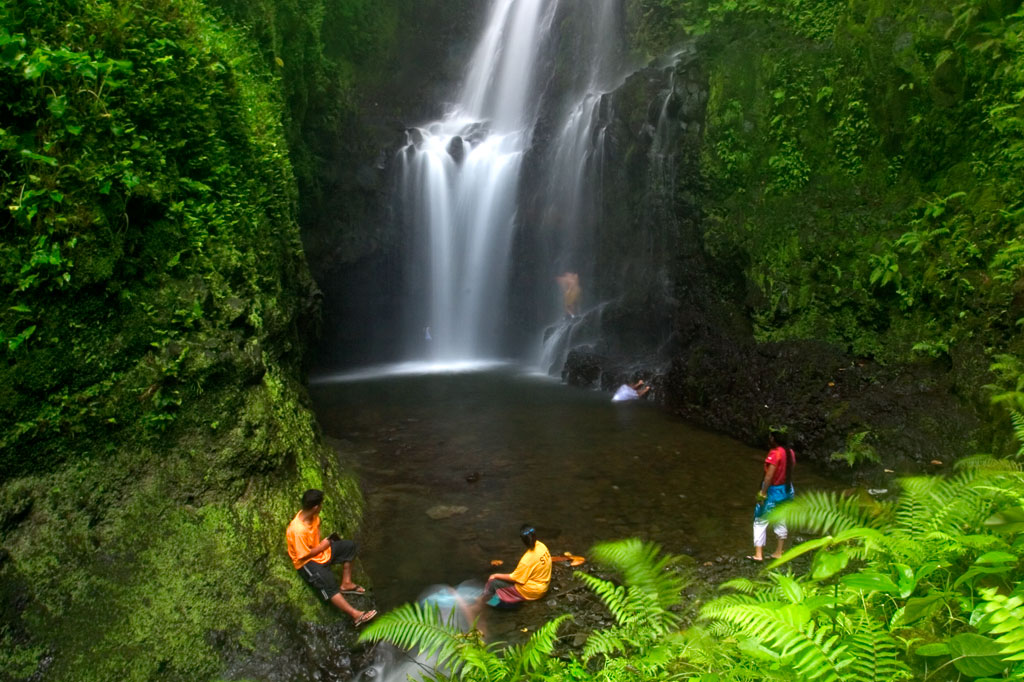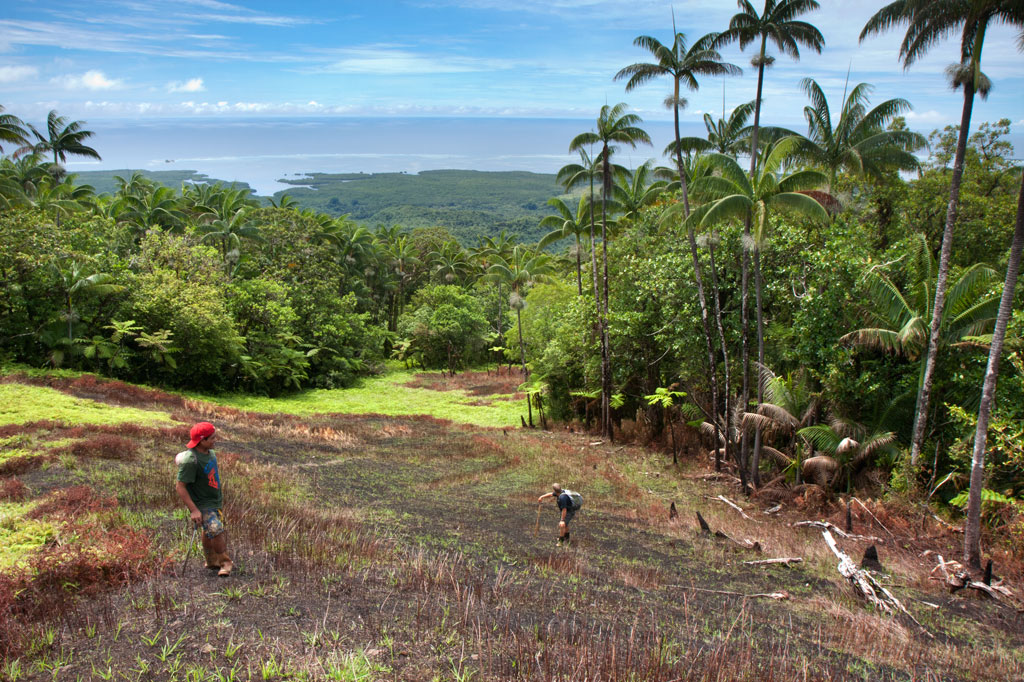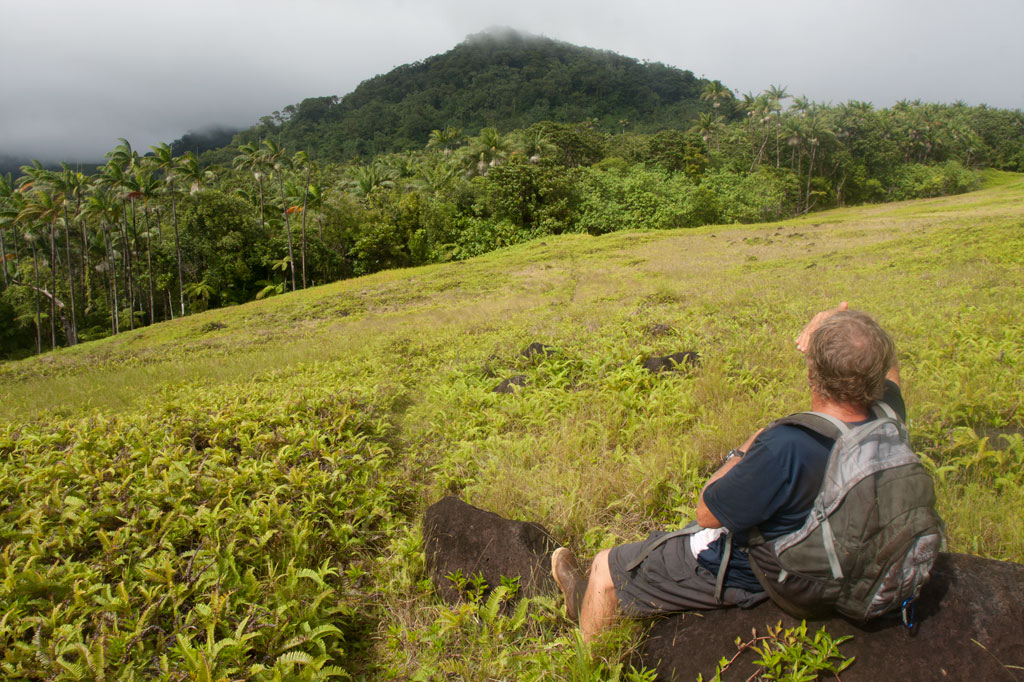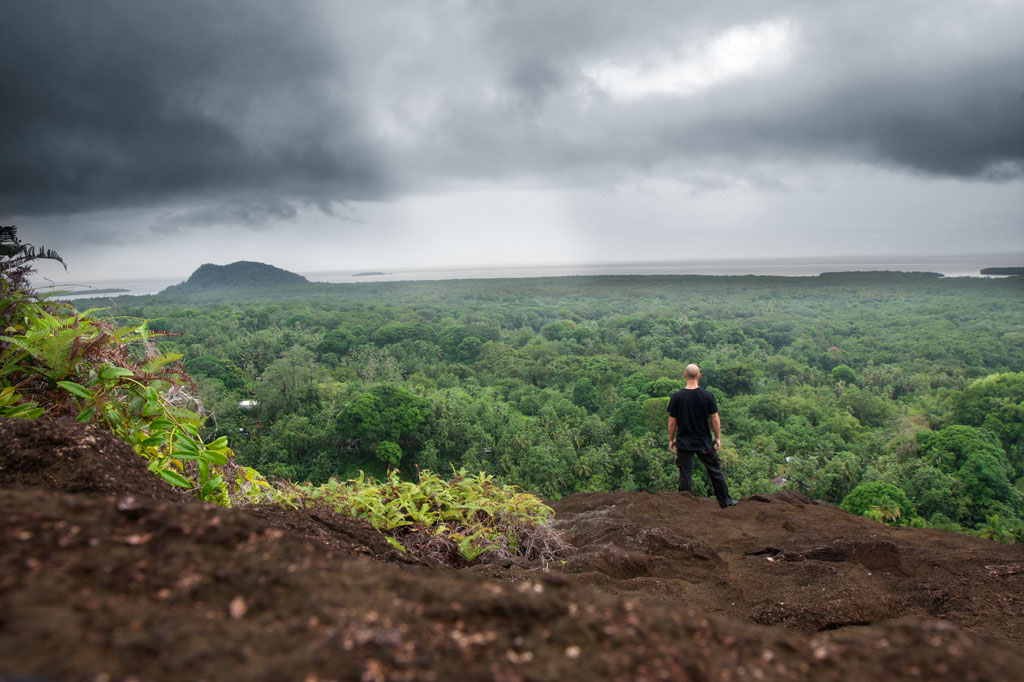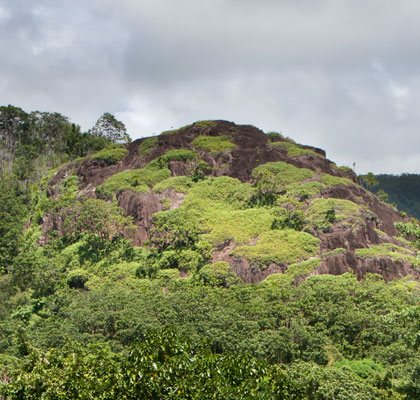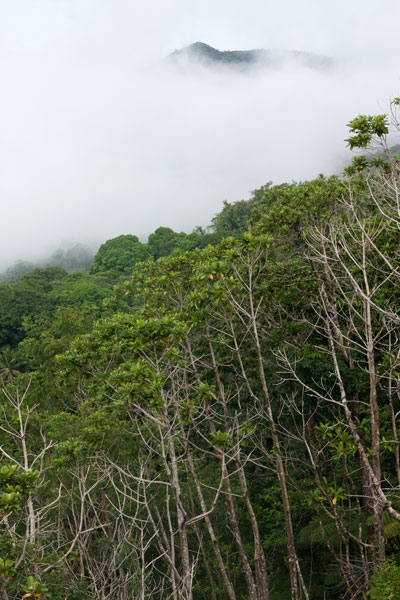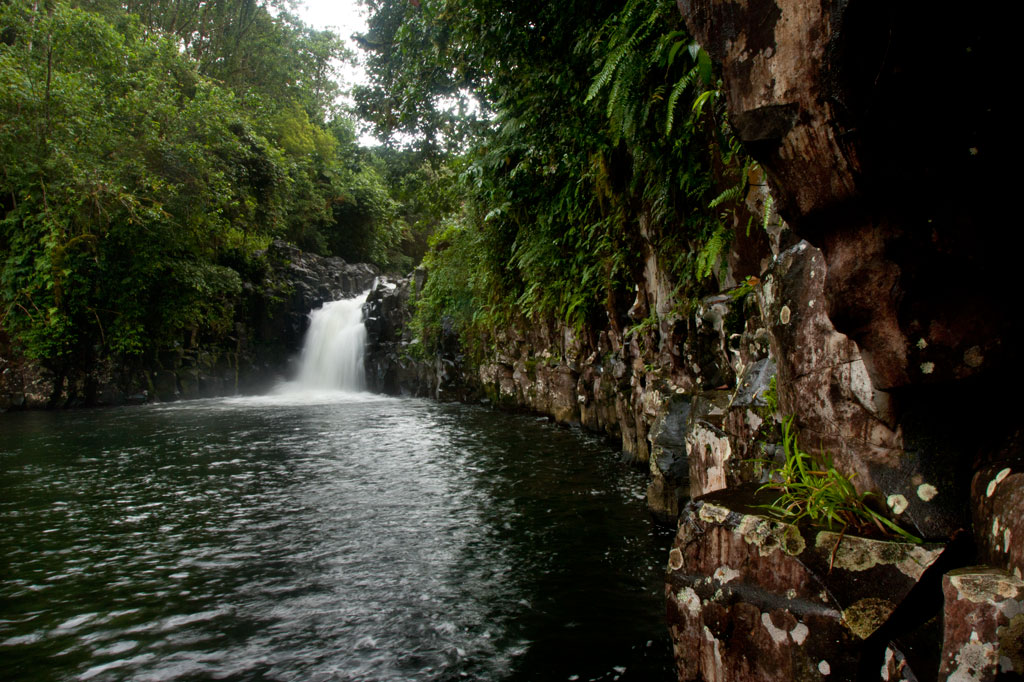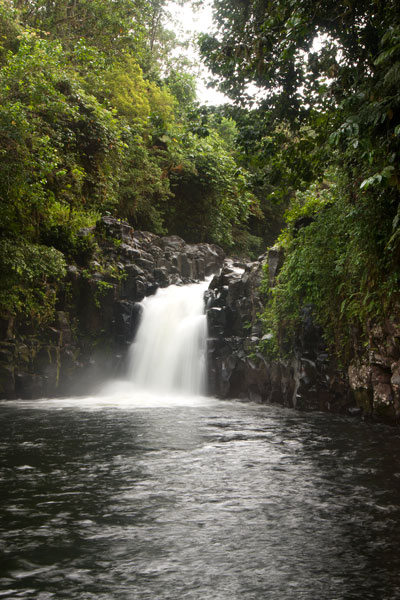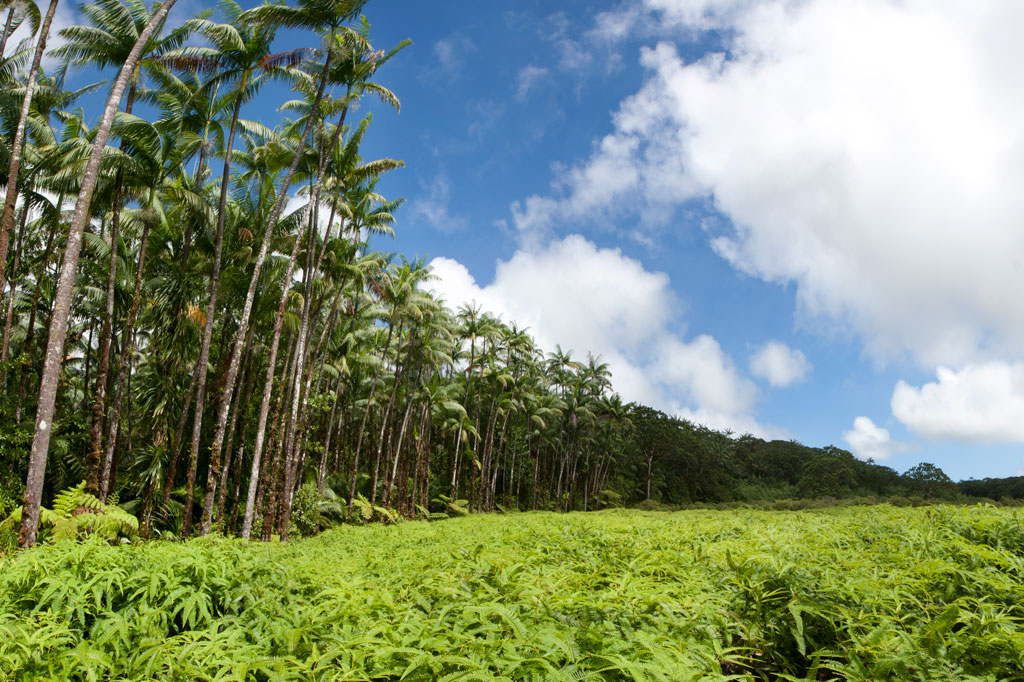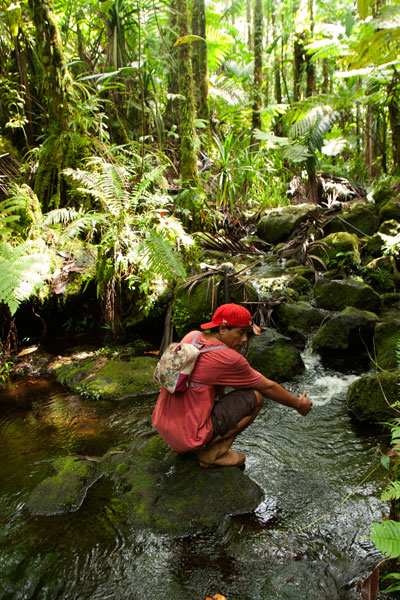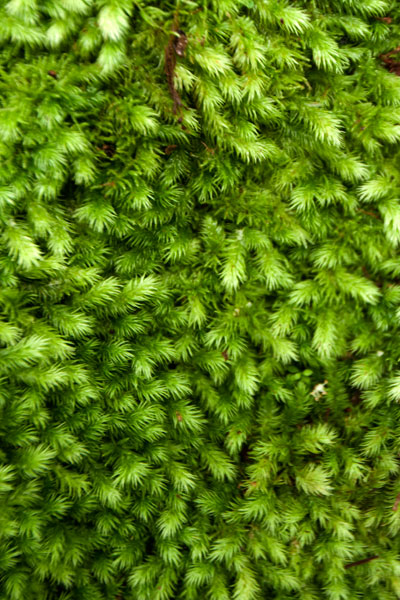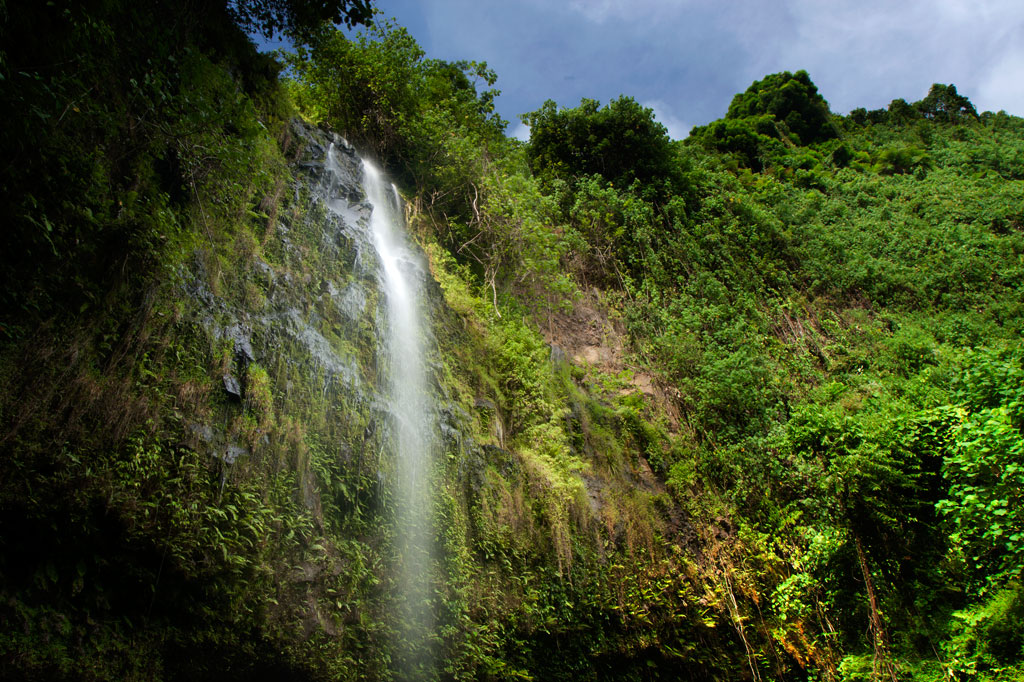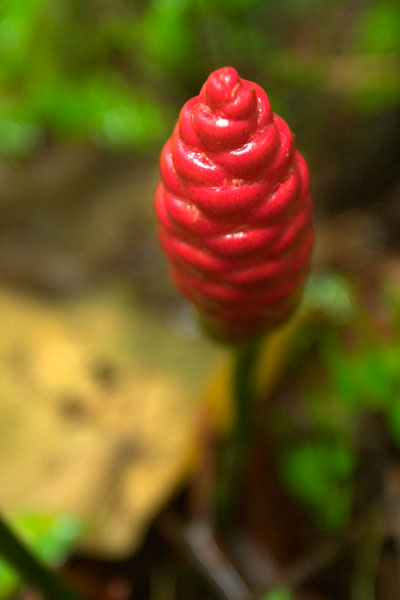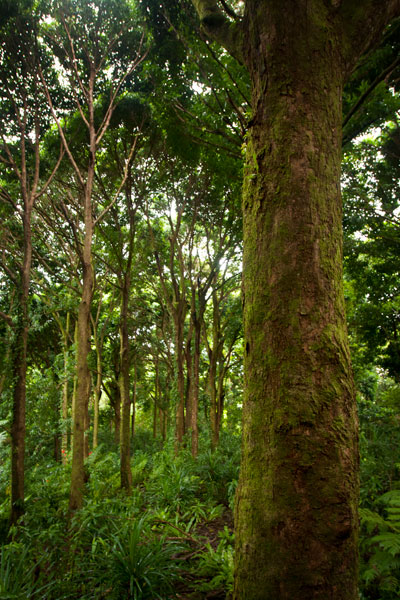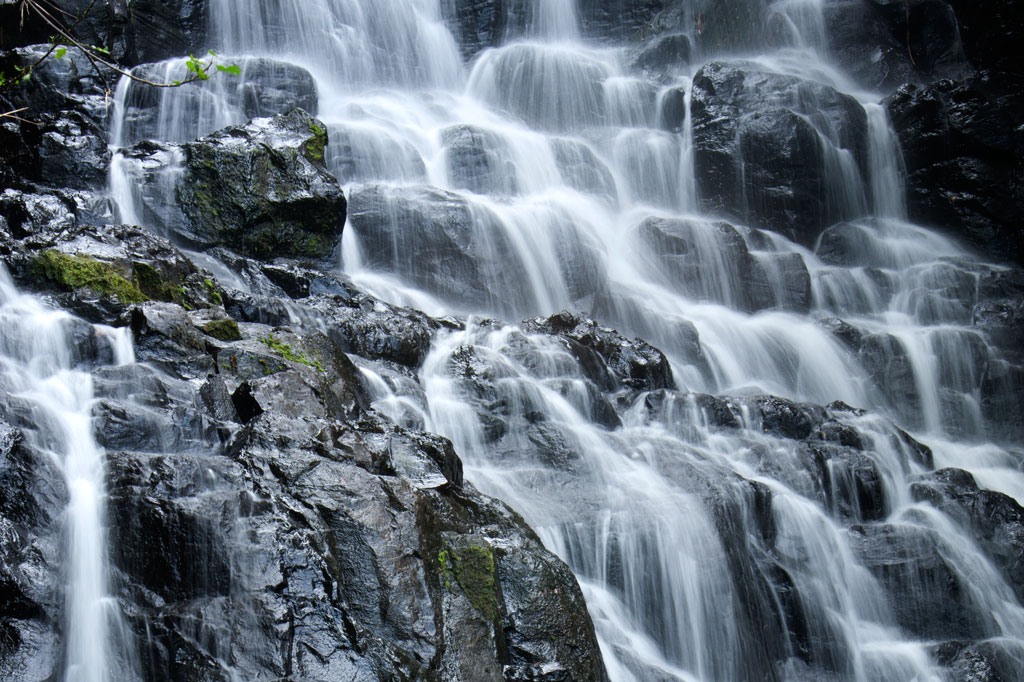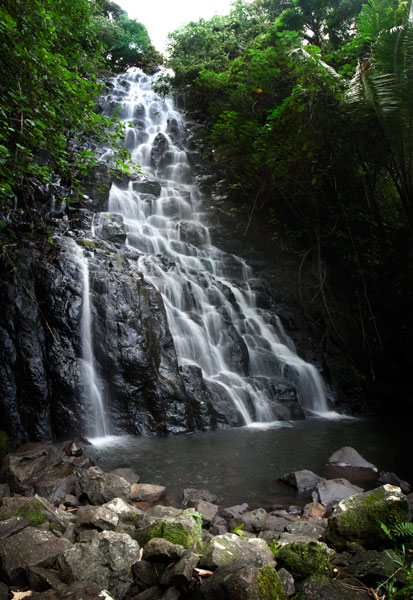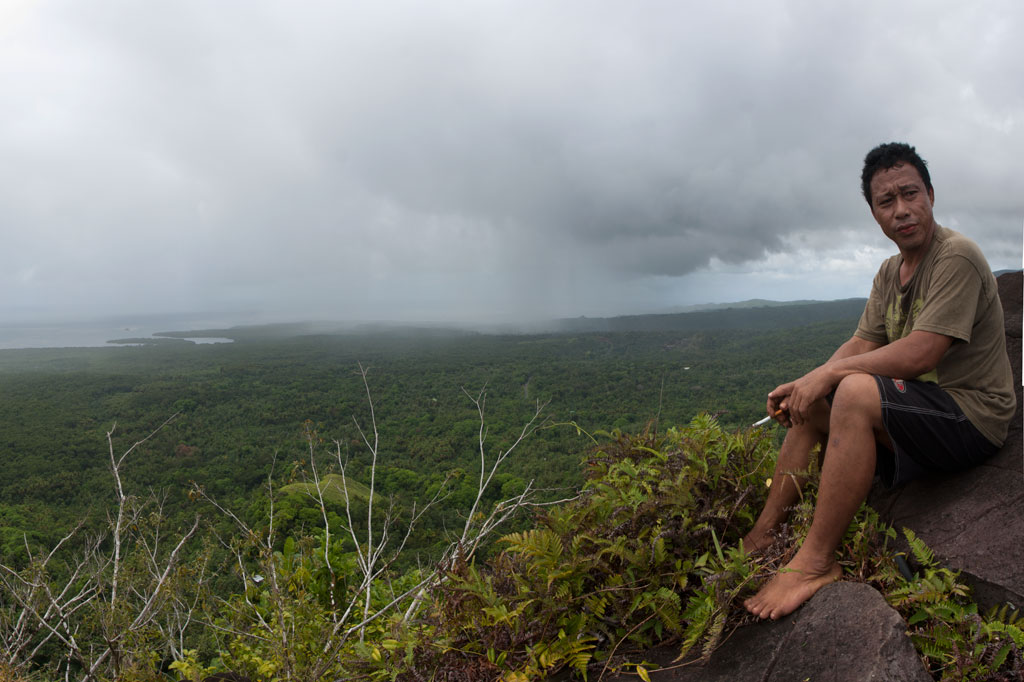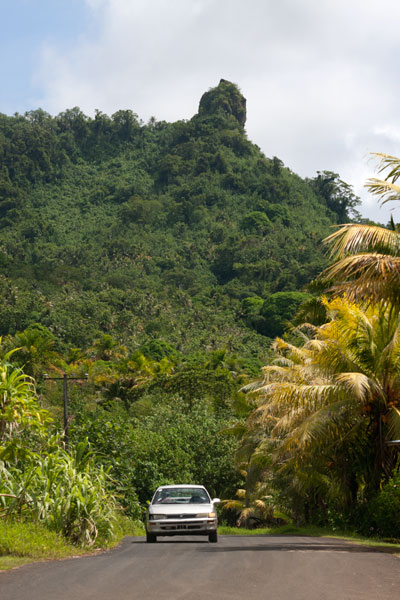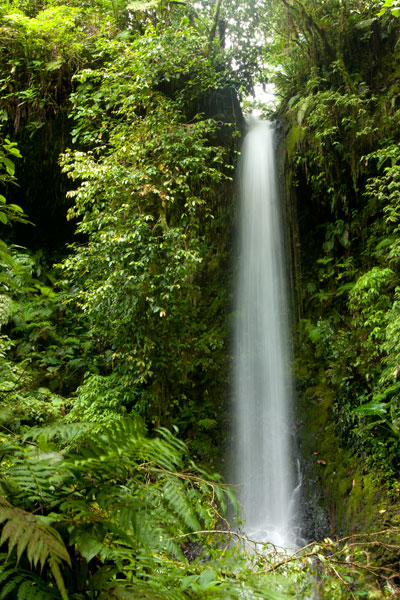
Because Pohnpei’s rainforested terrain is so challenging to move through, inexperienced hikers might think a jaunt into the wild interior of the island is out of reach. It isn’t. Almost anyone in relatively good physical condition can handle the “Six Waterfalls Hike”, which delves into the verdant forests and lush raparian environment of the remote Nanmeir Valley above Salapwuk.
The adventure begins near Salapwuk Elementary School. The early part of the hike follows a wide, mostly flat track through the trees. This is a good place to look for Asian waterbuffalo, or carabao, which some of the Salapwuk residents use as beasts of burden. The large, big-horned animals, which were brought to Pohnpei from the Philippines by the Spanish in the 1890s, may look fearsome, but are actually quite shy, gentle creatures. You might see one lolling about in a patch of mud or plodding along with a smiling child perched on its back.

Over time the track becomes a narrow footpath and begins to roll up and down as it passes through hilly native forests. Shortly after crossing the Sihngar Stream (Pilen Sihngar), there’s a fork in the trail. Continuing straight will keep you above and west of the river, while the eastern way leads down toward the upper Lehnmesi River and Pahnairlap, a serene punchbowl falls with a great little pool beneath it.
The rest of the hike follows along the banks of the river and occasionally crosses over it, stopping at four more waterfalls — Nikotoapw, Olotong, Iro, and Nan Emp — each with its own unique character. This segment is quite difficult, as hikers must traverse the round, jumbled stones that line the riverbed and its banks. Go slow, use your hands, and watch your footing.
Nikotoapw Waterfall is found a bit to the east of the river, above where the Nikotoapw Stream (Pilen Nikotoapw) joins the Lehnmesi. The site is screened by a pool with a wide “block falls” behind it, which hikers must circumvent. On the other side, the stream issues from a narrow slot. Continue through this and one comes to an enclosure mostly hidden from outside. There lies the falls and its sizable pool. If you swim under the falls and climb up on the rocks behind, you’ll find a cave.
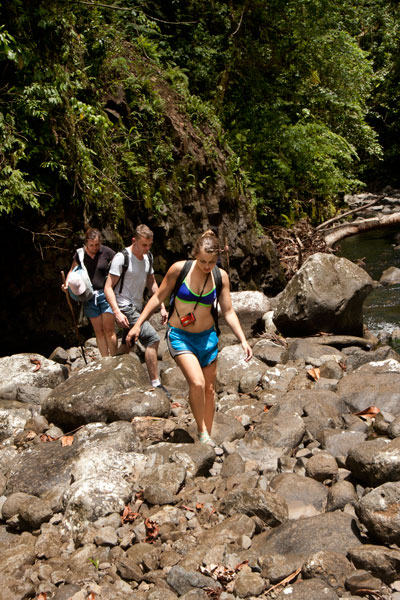
The third falls, Olotong, is found on the opposite side of the Lehnmesi from Nikotoapwpw. This is followed by plenty of hiking in the riverbed and one segment where the trail leaves the river and cuts through the forest before coming back to the watercourse. Iro and Nan Emp are both found on the west side of the river not too far apart.
The sixth falls, called Lipwentiak, is also hidden from view by the topography. At one point the river narrows and passes through a high-walled slot. Though there is a way up and around, the easiest and safest way past is to swim through the slot. On the other side, the walls open up to reveal a large pool with high walls on all sides, an island of cobbles, and beyond all that, a tiered “horsetail falls” that flows from a vaguely heart-shaped portal of dark rock. It’s very dramatic.
In all, the trek offers tons of great swimming and truly unreal scenery. Good footwear is a must.
- Plan for 6-8 hours round-trip with short swim breaks at each waterfall.
- Please visit the Local Guides & Tour Operators page for a list of experienced guides available for the Six Waterfalls Hike.
The Story of the Eel of Pahdol
A long time ago, a couple from Wene came to live in a place called Iro. One day there was a great storm and the heavy rains resulted in a huge flood. Two women in the area went out to fish in the flood, and while they were fishing, a starling flew over and dropped a small stone. The women took the stone home and gave it to the couple from Wene. Later, at a place called Pahnkipar (“under the pandanus tree”), the stone broke apart and from it was hatched a tiny freshwater eel. The couple kept the eel as their pet and allowed it to live in a pool at Pahdol (“under the hill”) in Pahnais. When the eel grew up, however, it began to act in sinister ways. At night, the eel would escape from its pool and sneak into the house, where it would stare at the sleeping couple. The couple became uncomfortable and decided to kill and eat the eel, but the eel overheard their plan, came into the house, and attacked them. The couple fled into the forest and hid under a huge rock, where they believed they’d be safe. The eel discovered the hiding place and ambushed the couple, devouring them alive.
The eel then traveled into the Nanmeir Valley in Pohnpei’s interior and followed the Lehnmesi River source. There she met Kiroun Meir, a high-titled man, who brought her to live with him at his home. The two became lovers and the eel was impregnated. She was restless, however, and departed, continuing to follow the river. At Lipwentiak, the eel encountered a hunter named Kiroun Mand, killing and eating eels. Recoiling at this sight, she created a sharp turn in the river with the writhing of her body. Soon after, she gave birth to her first daughter, the matriarch of the Sounlipwentiak subclan. She had other children later who became the founders of the Lasiadohng (“eels of the dohng tree”) and Lasiakotop (“eels of the kotop palm”) subclans. After that, the eel went to live in Dauen Sapwalap, where she terrorized the local inhabitants, devouring so many that the land became mostly deserted. When the monster finally died, her body formed Dolen Nett.


